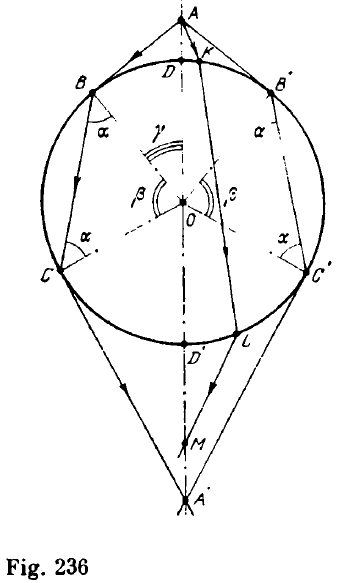Let the spider be at point A (Fig. 236) located above the upper point D of the sphere. The spherical surface corresponding to the arc BDB' of the circle is visible to the spider. Points B

and B' are the points of intersection of tangents drawn from point A to the surface of the sphere. The ray AB propagates within the sphere along BC. The angle α can be found from the condition

where no i * the refractive index of glass. This ray will emerge from the sphere along CA' Therefore, the fraction of the spherical surface corresponding to the arc CD'C' will also be visible (by way of an example, the optical path of the ray AKLM is shown).
The surface of the spherical zone corresponding to the arcs BC and B'C' will be invisible to the spider.
The angle γ is determined from the condition

where R is the radius of the sphere, and h is the altitude of the spider above the spherical surface. Since R >> h by hypothesis γ ≈ 0. We note now that β = pi - 2α and sin α = 1/ngl. Therefore,

Thus, the opposite half of the spherical surface is visible to the spider, and the fly must be there.